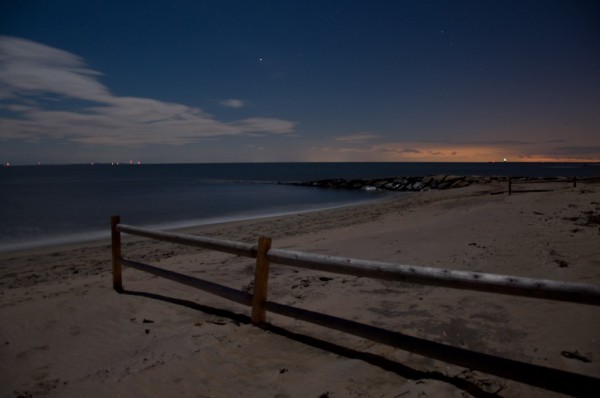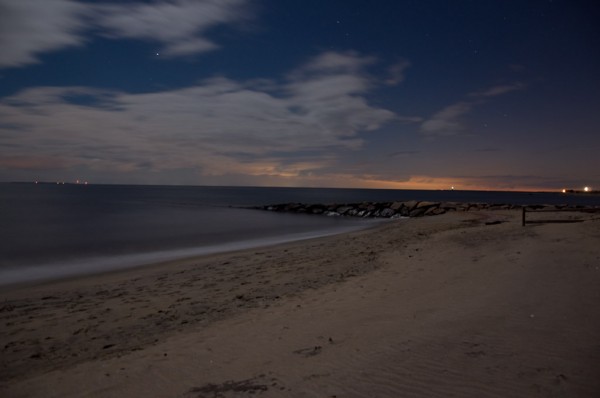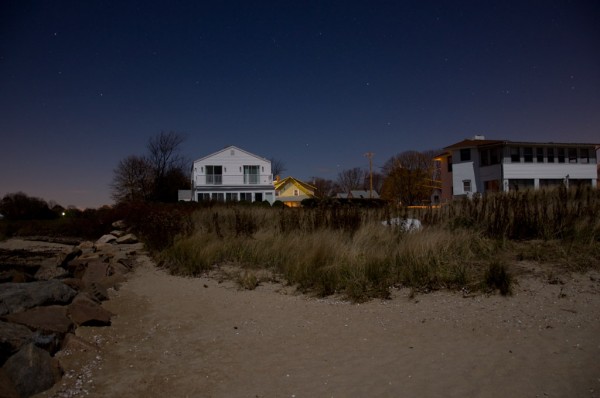We decided to go down to my mother-in-law’s for a visit on Monday night, since the kids had Tuesday off for Veteran’s Day. I knew the moon was almost full and if the clouds cooperated, it would be an opportunity for some cool “moonlit” shots. So, I brought my camera and tripod down to the beach to take some pictures.
One thing I immediately realized was that I:
1) forgot a flashlight, even though it was very bright from the moon, it wasn’t quite bright enough to see all the controls on my camera
2) wasn’t able to focus the camera (thus a flashlight would have helped), because it was so dark
To compensate for the fact that I couldn’t focus on anything per se, what I decided to try was focusing on infinity (the farthest point) and see what comes out. Here are a few shots:
 you can clearly make out Orion’s belt in this shot
you can clearly make out Orion’s belt in this shot
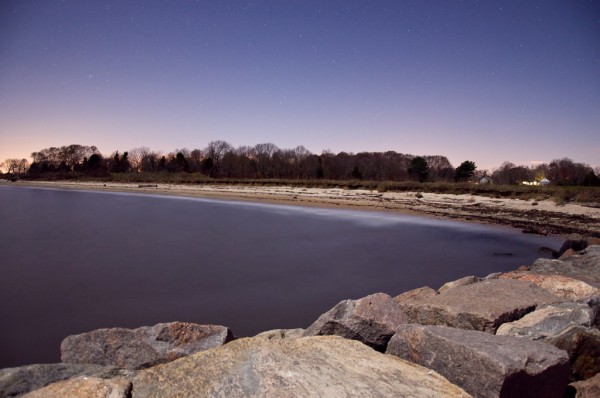
I brightened this up a bit, bumped the exposure and brightness a little
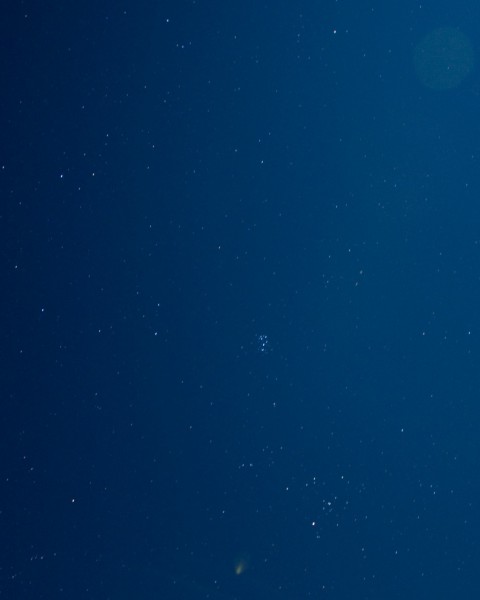
there was considerable lens flare from the moon on this shot, but I cropped it out
Some of the shots, when looked at 100% were a bit blurry. That might have been because of the wind blowing the camera strap or even the shutter opening and closing. The other reason was because I couldn’t see the subject to manually focus the shot. In any case, the pictures came out pretty good.
One thing I didn’t realize was how much stars move even with a relatively “short” long exposure. All of these shots were at a 30 second shutter speed. The one shot of the “Seven sisters” (Pleiades) constellation shows just how much they move, even in just 30 seconds.
The only bummer was that I saw TWO shooting stars and I didn’t get to capture them on the pictures. The last shot above, I was going to shoot one more of the same shot and decided not to… If I had, a shooting star would have been streaking across the top of the house!
All in all, it was an interesting experiment.

